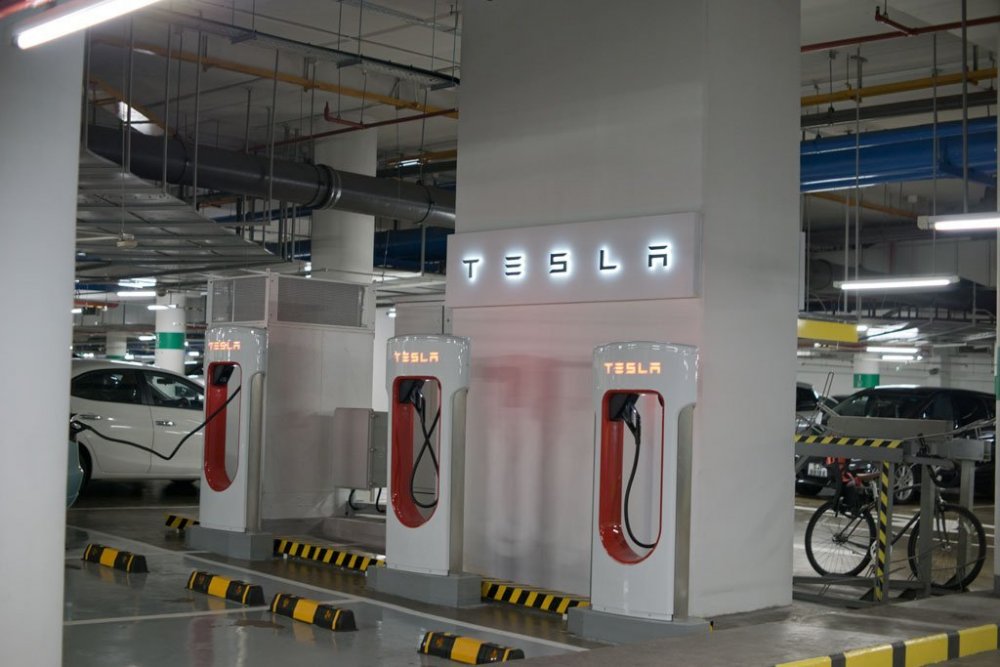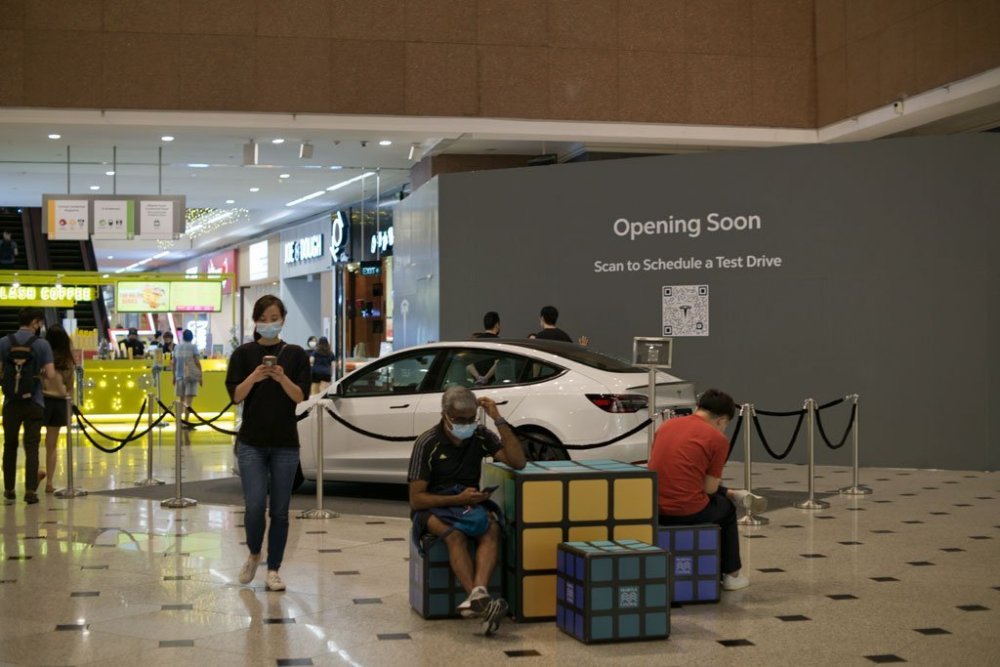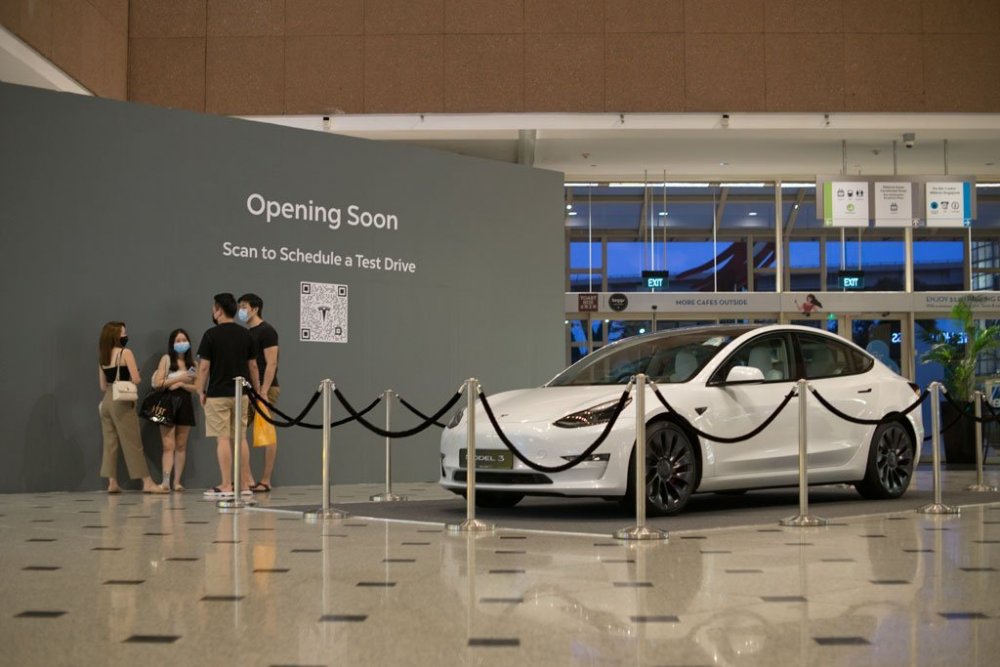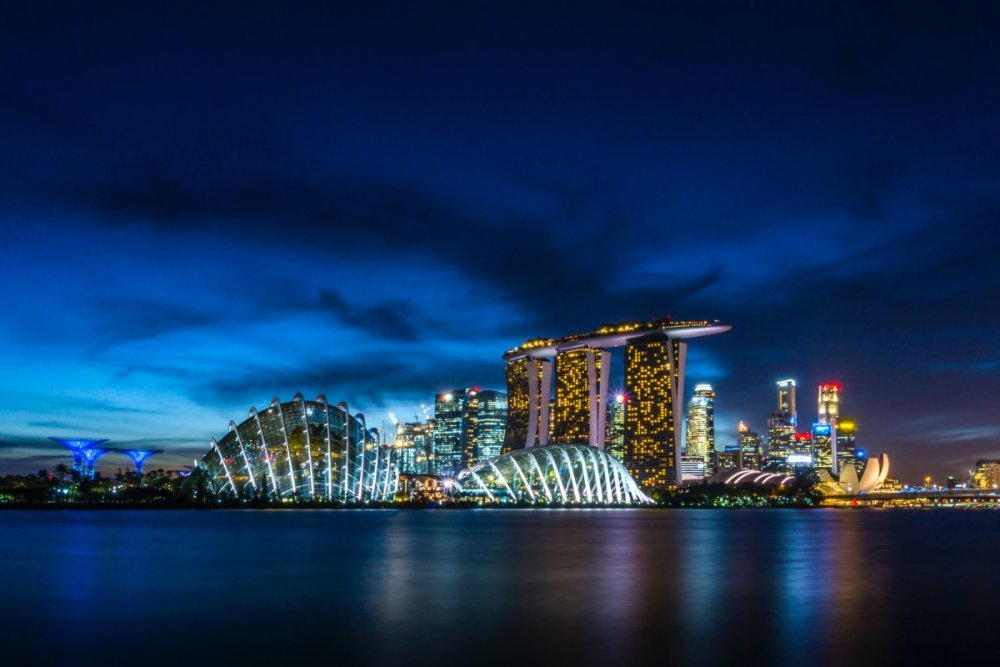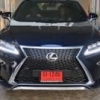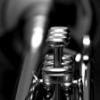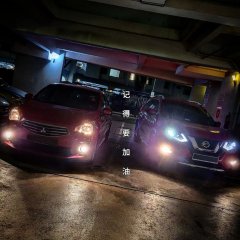Search the Community
Showing results for tags 'singapore'.
-
https://www.formula1.com/en/latest/article.formula-1-announce-seven-year-singapore-grand-prix-extension.rhAyCx0iHLvIIWaC7F7Iz.html F1 will therefore continue to visit the city of Singapore from 2022 to 2028 inclusive, after a multi-year extension was agreed between Singapore GP Pte Ltd (SGP), the Singapore Tourism Board (STB), and Formula 1. Although it's been two years since the Singapore Grand Prix, first held in 2008, has taken place – due to the global pandemic – the event will return in 2022 as part of this 23-race season. ----------------------------------------------------------------------------------------------------------------------------------- F1 VTL? Set up the F1 Village as a quarantine zone lol. Visitors cannot leave the F1 Village and locals have to check themselves into the F1 Village for the entire weekend too and quarantine themselves thereafter for the next seven days. Lol. TADA. My masterplan.
- 45 replies
-
- 7
-

-
.png)
-
JOHOR BARU: Prime Minister Datuk Seri Najib Tun Razak has announced that the Government has decided to implement the Vehicle Entry Permit fee for all foreign vehicles entering Johor. Najib said that the decision was made following a request made by the state. "I have discussed the matter with Deputy Prime Minister Tan Sri Muhyiddin Yassin and have also informed Minister in the Prime Minister's Department Datuk Seri Wahid Omar of our decision. "I have instructed him to inform the Road Transport Department (JPJ) so they can work out the details before the VEP is implemented," he said during a buka puasa event organised by the state Wednesday. "We will make an announcement later on the date of implementation and the rates for the VEP," he said. Najib also assured that a portion of the collection would be channelled to the state Government.
-
https://www.sgcarmart.com/news/article.php?AID=26177 No plans lined up this weekend? Why not head on down to Millenia Walk to catch the opening of Tesla's new dedicated showroom here in Singapore? sgCarMart understands from property developer and manager of Millenia Walk, Pontiac Land Group, that Tesla's new retail site is poised to open its doors at 11:00am come 15 January 2022. The new retail location comes just months after the mall became the second location in Singapore to host Tesla's V3 Superchargers, and comes following the closure of Tesla's former temporary site at One Assembly within Raffles City shopping centre. We have additionally been informed that prospective Tesla buyers will be able to experience the Model 3 at the new retail store, with test drives to be conducted along the East Coast Parkway's scenic waterfront, located just three minutes away. Those test drives, will have to be booked in advance however, via Tesla Singapore's dedicated site here. Tesla's new showroom is located at #01-84, facing The Great Hall at Millenia Walk. Opening Hours for the new showroom are 11:00am to 8:00pm from Sundays to Thursdays, while opening hours for Fridays and Saturdays are from 11:00am to 8.30pm.
-
Singapore is the most Instagrammable place in the world in 2022, according to Big 7 Travel, a travel website. https://mothership.sg/2022/01/singapore-most-instagrammable-place-2022/ List of 50 most Instagrammable places The travel website said they analysed the number of hashtags per destination and used survey results from their social audience, as well as input from their editorial team to get the list. The full list included 50 places around the world. Here are the top 10: Singapore Boracay, Philippines Oahu, Hawaii Tokyo, Japan New York City, New York Banff, Canada Amalfi Coast, Italy Chicago, Illinois Lisbon, Portugal Ha Long Bay, Vietnam The website said that Singapore is full of photo opportunities with locations like the Supertree Grove at Gardens by the Bay and street art along Haji Lane. Singaporeans will say this is kelong. Haha. Where's all the angmoh countries?
-
funny and nostalgic 😁😥 it's been 15 years since the sitcom's last episode (and 25 years since their debut) Phua Chu Kang and King Kong look very old now, but Chu Beng still looking good "best in Singapore and Jb, and some say Batam!"
- 31 replies
-
- 7
-

-
- phu chu kang
- channel 5
-
(and 1 more)
Tagged with:
-
- 25 replies
-
- 2
-

-
.png)
-
Finally! Something to call our own. 😁 New species of bacteria named after Singapore https://www.straitstimes.com/singapore/new-species-of-bacteria-named-after-singapore
-
Terminated KL-Singapore High Speed Rail terminated, after Singapore and Malaysia fail to reach agreement on project https://www.straitstimes.com/singapore/politics/kl-singapore-high-speed-rail-terminated-after-singapore-and-malaysia-fail-to
- 330 replies
-
- 4
-

-

-
- hsr
- high speed railway
-
(and 2 more)
Tagged with:
-
Please don't KPKB about serving NS anymore when you are able bodied. https://mustsharenews.com/amputee-serves-ns/?fbclid=IwAR2LEI_YzyLJa5oWCve50zmY4FN4IVMdlOJUEruJcIzBHaS0vTnd6P7VdJ4
- 136 replies
-
- 20
-

-
.png)
-
Continue PArt X here: PRev thread: Singapore Reckless Drivers Part IX - Page 410 - General Car Discussion - MyCarForum https://www.mycarforum.com/forums/topic/2719051-singapore-reckless-drivers-part-ix/?page=410&tab=comments#comment-7078917
-
Still complaining about PAP and living in Singapore? Better go Malaysia? 😂😂
-
After yakun whats their next target? Capitaland? DBS? SQ? JJ lin? 😂 https://www.straitstimes.com/asia/east-asia/chinese-netizens-flame-ya-kun-kaya-toast-for-listing-taiwan-as-a-country?utm_campaign=stfb&utm_medium=social&utm_source=facebook&fbclid=IwAR3EymBW92Qrx_HXoVUykG_2xVrq5YYIReFNxbGZaPaMlOCQOsW3MybjTpM “ BEIJING - China's cyber warriors - known infamously as Little Pinks - have targeted Singapore coffee-and-toast chain Ya Kun Kaya Toast for listing Taiwan as a country in its promotional material. The attacks quickly gained traction on Chinese social media platform Weibo on Wednesday (Oct 20) after a news outlet posted a clip showing a promotional video played at one of Ya Kun's outlets in the eastern Chinese city of Nanjing. In the Ya Kun video, a graphic showing the chain's international operations can be seen, and it lists Taiwan among 10 countries, including China, Japan, South Korea and Myanmar. The accompanying Chinese subtitles said: "Our over 40 retail stores in 10 countries overseas have all been warmly welcomed." Since news outlet btime.com released its news clip on Tuesday night, the hashtag - Singapore's food and beverage shop in Nanjing lists Taiwan as a country - has drawn more than 90 million views on Weibo. It has also sparked 2,500 discussions on the microblogging site. State media Beijing Radio and Television Station owns btime.com, which shares bite-sized videos online. Beijing considers Taiwan a renegade province and has punished corporations and chastised governments for referring to Taiwan as a country. In the 44-second news clip, which has attracted 3.9 million views, btime.com interviewed a mall employee, who said that the shop has been closed for at least two days after the mall received notification that it had "inappropriate advertising". "We are awaiting instructions from the state on follow-up actions," the employee was heard saying in the clip. When reached by The Straits Times, Ya Kun branding and market development director Jesher Loi said that the chain is working with the authorities on the issue. He declined to comment further. A staff member at another of Ya Kun's outlets in Nanjing told The Straits Times that the one singled out in the news clip was closed, without elaborating. Ya Kun has 16 outlets in China in cities such as Guangzhou, Chengdu and Hangzhou, according to online marketplace Anxingjiameng. A search on Ya Kun's website returned an error message after clicking on its overseas locations tab. Netizens called for Ya Kun's closure, and urged Chinese consumers not to patronise businesses that promote "Taiwan separatism". "Ya Kun doesn't even have basic respect for China's sovereignty, but still wants to make money off Chinese citizens? Classic case of breaking the bowl after eating the rice!" user Fengmintianxia said, referring to a Chinese proverb. Singaporean singer Stefanie Sun was also dragged into the fray, with some Little Pinks accusing her of having made comments referring to Taiwan as a country in the past. In an interview, Ms Sun was asked to list the places where she had held concerts, and she said: "Singapore, Malaysia, Taiwan, Hong Kong and China". The Little Pinks felt that she should have used "nei di" (mainland) instead of "zhong guo" (China) when referring to China. In 2018, Japanese retailer Muji was fined 200,000 yuan (S$42,077) in Shanghai for using packaging that listed Taiwan as a country. Swedish furniture giant Ikea also came under fire that year for listing Taiwan and Hong Kong separately from China on its packaging. Netizens felt that Ikea should have used "China-Hong Kong" and "China-Taiwan" instead, of Hong Kong and Taiwan. The controversy died down later. American Airlines, Delta Air Lines and United Airlines were made to remove references to Taiwan as a separate country on their websites after the Civil Aviation Administration of China demanded the changes.
- 149 replies
-
- 17
-

-
.png)
-

-
https://asia.nikkei.com/Spotlight/Coronavirus/Singapore-s-upcoming-leaders-tested-as-COVID-wave-rattles-public?utm_campaign=GL_coronavirus_latest&utm_medium=email&utm_source=NA_newsletter&utm_content=article_link&del_type=10&pub_date=20211011150000&seq_num=7&si=44594 Singapore's upcoming leaders tested as COVID wave rattles public PM hopefuls in tight spot between virus containment and vow to unchain economy A sign encourages social distancing in Singapore in late September, as coronavirus cases rise. © Reuters DYLAN LOH, Nikkei staff writerOctober 11, 2021 13:05 JST SINGAPORE -- The Singaporean government is fighting a relentless wave of COVID-19 infections, with daily cases topping 3,700 for the first time on Saturday despite a full vaccination rate above 80%. The crisis has ensnarled key ministers tipped as potential leadership candidates in a battle to manage public fears and expectations. The city-state's long-term plan is to "live with" the coronavirus as an endemic disease like the flu, backed by widespread jabs. The vaccines are largely working as advertised, and Prime Minister Lee Hsien Loong on Saturday stressed that Singapore "must press on" with the strategy while taking precautions. "Singapore cannot stay locked down and closed off indefinitely," Lee said in a televised address, as the city-state revealed plans to reopen its borders further. "It would not work, and it would be very costly." But as the case numbers rise and the death toll creeps above 160, there are signs of public uncertainty and unease. For the government ministers tasked with guiding the way -- including prime minister hopefuls -- the pressure of balancing safety and economic considerations is growing as online petitions criticize their performance. For the rest of the world, Singapore is becoming a case study in communication and the challenges of preparing a population to coexist with COVID. Eugene Tan, a 37-year-old researcher, is one resident struggling to shake worries about the virus despite living in one of the world's most vaccinated countries. As cases climbed, he pulled his three children out of preschool. Part of his concern was that the children, all under 5, are in an age group that has not yet been approved for shots. Their grandparents, among the most vulnerable to breakthrough infections, care for the kids on a daily basis. But Tan also feels the government's evolving strategy has left the public unsure. He recalled how last year officials would "go hard on the brakes" on social activity whenever there was an outbreak. This time, they have stopped short: In late September they reintroduced limits on gatherings and dining out to two people, explaining they needed to buy time to scale up health care capacity. But they have not reimposed sweeping restrictions, avoiding the "zero tolerance" policies still seen in some parts of Asia, such as mainland China. "While the government has tried to prepare Singaporeans for an increase in cases and justify its rationale for opening up, I think it has misjudged how the public would accept the trade-off of increased death rates and critical illness," Tan said. "With the current wave, the tweaking of its own policies suggest that the government seems to be playing catch-up on the worsening COVID situation, while still wanting to capitalize on opening up." The researcher is not alone in harboring doubts. Pockets of Singaporeans are calling out the coronavirus task force led by Finance Minister Lawrence Wong, Health Minister Ong Ye Kung and Trade and Industry Minister Gan Kim Yong. The first two are rising leaders in the ruling People's Action Party and considered potential candidates to succeed Prime Minister Lee. "As Singapore has agreed to choose ... living with COVID, it does not mean that you should just leave everything and allow this situation to blow up," reads a petition on the website change.org, calling for Ong to resign over the infection surge. It had gathered over 8,000 signatures as of Monday morning. Another petition called for Wong and Gan to quit -- but for the opposite reason. It charged that they lacked the "will" to follow through on living with endemic COVID. This petition, however, gained little traction, managing well below 100 signatures. Many, like Singaporean financial adviser Michelle Ngiam, recognize the tight spot the ministers are in. "They are doing what they can to the best of their ability," Ngiam said. "They are also limited by certain factors like manpower and available resources so we can't expect them to be perfect." But experts do see the situation testing the upcoming leaders' standing in the eyes of the public. "With zigzagging policymaking, they risk losing [the] favor of the electorates that prefer more certainty, which is one of the features the government once had," Yu Liuqing, country analyst at the Economist Intelligence Unit told Nikkei Asia. Yu argued Wong and Ong should still be seen as good policymakers and technocrats, with their calibrated approach to containing COVID. But he said public trust "is expected to have deteriorated a little amid the oscillation of policy approach between 'containment' and 'freedom.'" He also suggested public guidance on the changing strategy may have been "inadequate" -- "failing to manage the expectation of this wave of COVID-19 and [to] fully destigmatize COVID-19." Put another way, Singapore wants to live with the virus, but the public may not be primed to accept what that means. Official statistics over the past month or so show 98% of cases had no or mild symptoms, indicating the Pfizer and Moderna jabs Singapore has used are working to prevent severe infections. To allocate resources to those most in need, the authorities are letting fully vaccinated people with nonserious cases recover at home. "With vaccinations, COVID-19 has become a treatable, mild disease for most of us," Lee said on Saturday. Singaporean Health Minister Ong Ye Kung and other coronavirus task force ministers are in the spotlight over the government's "living with COVID" strategy. © AP Yet with the government urging the public to regularly self-test for COVID -- kits are available from vending machines -- medical helplines and facilities have been inundated with inquiries from alarmed residents who tested positive. This has put extra, some might say unnecessary, stress on the health system. "We are still very afraid of the virus despite the low numbers of serious infections reported every day," observed Paul Tambyah, president of the Asia-Pacific Society of Clinical Microbiology and Infection in Singapore. At the same time, Tambyah noted that around 1,500 COVID patients have ended up in hospital wards in recent weeks. That, he said, is equivalent to "about one and a half general hospitals, which is quite a significant impact." "I think that people have a lot of questions and it would be good to have these answered in a frank and open way," Tambyah said. Health Minister Ong, who has stressed that the delta variant "doesn't follow our script," has pledged to work out kinks in the government's response. He acknowledged in parliament recently that the home recovery initiative was not ready to deal with the surge in COVID-19 patients. He has also warned that the country should brace itself for a possible scenario with 5,000 cases reported a day. Ong's colleague Wong, on the other hand, has tried to assure Singaporeans they need not be alarmed, since severe cases are likely to remain limited. He has also sought to "destigmatize" the virus, as the EIU's Yu suggested. "There's nothing to be embarrassed about if you catch COVID," Wong said earlier this month. "Sooner or later, many of us will end up catching the virus, but we will have zero or mild symptoms." Lee on Saturday appeared determined to set the record straight and calm a worried public. He acknowledged that "many have found it difficult to keep up with new policies and changes to measures," and that "'living with COVID-19' has not been a smooth and easy journey." He warned the government "may have to tap on the brakes again if cases again grow too fast." But he called for a change in mindset. "We should respect COVID-19," Lee said, "but we must not be paralyzed by fear."
- 29 replies
-
https://mothership.sg/2021/05/stop-asian-hate-singapore-miss-universe/ What's your thought? I think this is slightly better than just "World Peace" It's more targeted. 😅
- 35 replies
-
- stop asian hate
- bernadette belle wu ong
-
(and 2 more)
Tagged with:
-
https://asia.nikkei.com/Economy/Trade/Singapore-backs-Beijing-s-CPTPP-bid-Chinese-ministry-says?utm_campaign=GL_asia_daily&utm_medium=email&utm_source=NA_newsletter&utm_content=article_link&del_type=1&pub_date=20211018123000&seq_num=17&si=44594 Singapore backs Beijing's CPTPP bid, Chinese ministry says Xi wants RCEP to enter into force as scheduled Chinese President Xi Jinping spoke with Singaporean Prime Minister Lee Hsien Loong by phone on Oct. 15. © Reuters TSUKASA HADANO and TAKASHI NAKANO, Nikkei staff writersOctober 16, 2021 01:11 JST BEIJING/SINGAPORE -- Singapore has welcomed China's application to join the CPTPP trade agreement, the Chinese Foreign Ministry said Friday. Singaporean Prime Minister Lee Hsien Loong told Chinese President Xi Jinping in a call that day that Singapore "welcomes and supports" China's application to join the Comprehensive and Progressive Agreement for Trans-Pacific Partnership, "which will benefit the prosperity and development of the region," a Chinese statement said. A release from the Singaporean Foreign Ministry did not mention any discussions regarding the CPTPP. Xi expressed China's willingness to help put the Regional Comprehensive Economic Partnership -- a separate, broader trade agreement -- into effect as scheduled. Since China and Taiwan both applied to join the CPTPP in September, Xi has been working to win over the pact's Southeast Asian and South American members. The Chinese Foreign Ministry has also said that Chilean Foreign Minister Andres Allamand said his country "firmly supports" China joining the CPTPP on a call with Chinese Foreign Minister Wang Yi earlier in the week. But countries like Australia and Canada, which are at odds with China over security issues, are believed to have reservations about Beijing joining the framework. The CPTPP's current members are Australia, Brunei, Canada, Chile, Japan, Malaysia, Mexico, Peru, New Zealand, Singapore and Vietnam. Admitting a new member requires unanimous agreement.
-
https://asia.nikkei.com/Spotlight/Asia-Insight/Singapore-soul-searching-over-economy-as-COVID-surges?utm_campaign=GL_asia_daily&utm_medium=email&utm_source=NA_newsletter&utm_content=article_link&del_type=1&pub_date=20211005190000&seq_num=2&si=44594 Singapore hopes its vaccination rate above 80% will allow it to leave COVID-19 restrictions behind, but for now it is focused on keeping infections in check. © Nikkei montage Singapore 'soul searching' over economy as COVID surges Even if vaccines help city-state 'live with' the virus, long-term questions loom KENTARO IWAMOTO, Nikkei staff writerOctober 5, 2021 06:00 JST SINGAPORE -- As pedestrians once again dwindled in Singapore's central business district on Sept. 27, the manager of a health food restaurant let out a sigh of frustration. "No one is coming back," he said. In normal times, workers from nearby offices would be chatting over a light lunch of seafood and vegetables on rice. But renewed COVID-19 restrictions imposed that day made working from home the default, and limited dining in eateries to pairs -- less than two months after such rules were eased. The restaurant had made it through the first year and a half of the pandemic. The manager wasn't sure it would survive much longer. He said he might have to "close because we are losing money over the year." As one of the world's first countries to fully vaccinate 80% of its population against the coronavirus, clearing the threshold in late August, Singapore was set to accelerate its economic reopening. The government had devised a "living with COVID" strategy, outlined by virus task force ministers in June, under which it would treat the disease as endemic like influenza and restore a semblance of normal life. Now, the authorities are fighting an exponential rise in infections, which began after the government relaxed some rules in August. A record 2,909 new cases were reported last Friday, more than 10 times the number a month earlier and marking one of the highest per capita rates anywhere. The rapid increase is partly due to frequent testing, and since 98% of new patients are asymptomatic or have only mild symptoms, the country of 5.45 million has not abandoned its plan to coexist with the virus. But it has hit the brakes. "We had all hoped that we could put these restrictions behind us, especially with our high vaccination rates and with our plans to move forward to a COVID-resilient nation," Finance Minister Lawrence Wong, who co-chairs the task force, said when the government announced the rule-tightening on Sept. 24. "But the reality is that with the current infection trajectory, our health care system and our health care workers are facing many pressures." Even if the government shows Singapore can live with COVID-19, longer-term challenges loom. As the health crisis changes the way the world does business, can a travel and trade hub find new ways to attract people and investment? Domestically, can Singapore address its aging population and improve the lives of low-wage workers? The People's Action Party, which has led the nation since independence in 1965, is seeking answers while facing a burning question of its own: Who will succeed 69-year-old Prime Minister Lee Hsien Loong? In many ways, Singapore stands at a critical juncture. "I think there is indeed soul searching at the highest levels of the government about building competitive advantages beyond some of our traditional strengths," said Walter Theseira, associate professor at Singapore University of Social Sciences. The pandemic has highlighted some of those strengths. Carefully calibrated safe distancing measures, including the use of digital technology for contact tracing, drew global attention as an example of a smart response. The city-state has limited its COVID-19 death toll to slightly over 100. And Singapore was the first major Asian economy to start vaccinations, in December, securing Pfizer-BioNTech shots initially and later adding Moderna. Yet the crisis has also exposed weak links in Singapore's advanced economy and wealthy society. Explosive infections in crowded dormitories for migrant workers last year showed how much the construction, shipyard and other industries rely on low-cost labor. Global travel restrictions, including Singapore's own tight border controls, have not only dampened tourism and related businesses but also hindered inflows of new labor, blue- and white-collar alike. Population statistics released late last month revealed that the number of foreign nationals was down 10.7% on the year, to 1.47 million, as of June. Growth was not exactly booming before COVID-19. Gross domestic product grew 1.3% in 2019, the slowest since the global financial crisis, amid disruptions in trade. Then, in 2020, Singapore suffered its steepest economic contraction on record, 5.4%. The economy has since shown signs of recovery. The government in August upgraded its 2021 GDP projection to a range of 6% to 7%, from 4% to 6%, thanks to vaccinations and improving conditions in key trade partners. But the rebound is proving bumpier than expected. A man sits among empty seats at a free movie screening in Singapore on Sept. 29, after restrictions on social gatherings were tightened. © Reuters The latest tightening of restrictions "will likely hurt some of the services segments, particularly food and beverage, retail, recreation and hospitality," Maybank Kim Eng economist Chua Hak Bin said, while noting that these sectors constitute a relatively small portion of the economy. External headwinds are gathering, too. China's economic slowdown bodes ill for countries like Singapore with strong business ties to the world's No. 2 economy. Singapore's largest bank, DBS Group Holdings, warned in a recent report that "slower China growth in [the second half of 2021] will affect export performance going forward." Already, the year-on-year growth of Singapore's manufacturing sector -- core products include electronics, machinery and pharmaceuticals -- downshifted in August for the second consecutive month, to 11.2%. The country's benchmark non-oil domestic exports also slowed for the second month in a row, growing 2.7%. "The transition from pandemic to COVID being endemic is expected to be tepid and uneven," DBS economist Irvin Seah said. More worrying for officials is persistent uncertainty over the viability of Singapore's economic model. An attempt to preserve travel, one element of the model, has not gone according to plan. In February, a facility called Connect@Changi opened near Changi Airport as an international "bubble" for business. The idea was to have visitors fly in and stay on-site, attending meetings with local partners in rooms separated by airtight glass partitions. But, for now, the complex has been converted into a care facility for COVID-19 patients without severe symptoms. This reflects both Singapore's rising cases as well as the slow rebound in travel demand. "The facility was intended for travelers, but given the tight border measures that are still in place, Connect@Changi adapted and repurposed itself," Health Minister Ong Ye Kung explained on Facebook. While COVID-19 has stopped travelers from coming, authorities worry new global tax rules could keep companies away as well. Connect@Changi, a facility meant to host safe international business meetings, is being used as a care facility for COVID-19 patients without severe symptoms for now. © Reuters In July, Finance Minister Wong was questioned in parliament about how a proposed global minimum corporate tax would affect Singapore's low-tax model. While the country's corporate tax rate of 17% is higher than the suggested minimum of 15%, many foreign companies appear to have benefited from lower effective rates. "It will make it harder for us to attract investments and we have to work harder, particularly, given our size," Wong said, conceding some other locations "offer equally, if not more, attractive and compelling attributes." The hard work, he continued, could include "upgrading of our workforce, our infrastructure, our connectivity, our overall business environment." Social trends may complicate any such efforts. Besides the sharp decline in foreign workers, the latest population statistics show a quickly graying population. Excluding foreign nationals, residents aged 65 or older accounted for 16% of the total, up from 15.2% a year earlier. Of particular concern is how to support lower-income seniors and encourage their participation in the workforce. Tan Poh Lin, assistant professor at the National University of Singapore's Lee Kuan Yew School of Public Policy, said "generation-specific solutions" are necessary due to large gaps in education and income, including technology training "to narrow the perceived disadvantages of hiring older workers with outdated skill sets and expertise." But she said in the near term, "especially due to the COVID-19 pandemic fallout, a mix of policies aimed at monetizing households' assets and government support would be more important for generating financial security for lower-income elderly. "There is also an opportunity to take advantage of the shift toward more flexible work arrangements to increase elderly labor participation." Prime Minister Lee emphasized worries over low-wage earners -- not only seniors but also informal "gig" workers like delivery drivers -- in his National Day Rally speech on Aug. 29. "Lower-wage workers are more stressed than others," Lee said. "They have less savings to tide over hard times. In the pandemic, their situation has been precarious." Whether it is reducing inequality or stopping the COVID-19 surge, Lee and his ruling PAP may be feeling the weight of citizens' expectations more than usual. For much of Singapore's history, the party could count on strong public support driven by a brisk economy, coupled with an election system that democracy advocates have long described as unfair. But in the 2020 election, the opposition won a record 10 seats, while the PAP's share of the popular vote plunged to 61.2%, close to its worst performance of 60.1% in 2011. Arguably, the party's position has only become more uncomfortable. Its succession plan was thrown into disarray when heir apparent and Deputy Prime Minister Heng Swee Keat abruptly withdrew from consideration, saying the next leader should be someone younger. That "someone" has yet to be named. After the opposition's breakthroughs last year, the PAP will be looking to confirm Lee's successor and convince the public Singapore is on the right path before the next vote, due by 2025. Singaporean Prime Minister Lee Hsien Loong receives a COVID-19 vaccine booster shot on Sept. 17. © Reuters Experts stress that even in a world reshaped by the coronavirus, Singapore still has plenty going for it. "Singapore's financial center continues to thrive even during the pandemic, strengthening its standing as a fund management and private banking hub," said Maybank's Chua. "Concerns over the national security law in Hong Kong are also diverting investments and funds into Singapore," he said, while the city-state is "benefiting from the reconfiguration of manufacturing supply chains toward ASEAN from China." As the pandemic pushes businesses to go digital and pursue sustainable development, Singapore is doing its best to capture these trends, creating frameworks to support fintech and leading the region in green financing. Singapore University of Social Sciences' Theseira argued the nation continues to offer a combination of safety, stability and economic vibrancy that is hard for its neighbors to match. He sees a major manufacturing opportunity as well, if Singapore can sharpen its innovation and productivity so it is not "competing just on price." Theseira cautioned that "the way ahead won't be smooth." "But I think COVID-19 has certainly thrown us opportunities as well as challenges, because it is more clear now that global business and production networks are really too concentrated and vulnerable," he said. "Singapore has a good chance of picking up momentum as it seeks to build capabilities in advanced manufacturing and digital technologies."
-
THE ALL-NEW ŠKODA OCTAVIA EXTERIOR Emotive exterior design, greater dimensions The new front apron and the sharply drawn, new headlights provide visual highlights for the ŠKODA OCTAVIA. The compact vehicle’s increased length and width bring out its self-assured character. At 4,689 mm, the fourth-generation ŠKODA OCTAVIA COMBI is 22 mm longer than its predecessor; its width has grown by 15 mm to 1,829 mm (the hatchback’ length has increased by 19 mm to 4,689 mm and by 15 mm in width, taking it to 1,829 mm). The wheelbase measures 2,686 mm. The redesigned, shallow roof rails emphasise the vehicle’s elongated silhouette, whilst alloy wheels measuring up to 19 inches lend it a powerful appearance. New OCTAVIA ranks among the most aerodynamic cars in the world The new design sharpens the ŠKODA OCTAVIA’s visual presence and enables excellent aerodynamics. The hatchback has a drag coefficient (cd) from 0.24 and the OCTAVIA COMBI from 0.26. The new OCTAVIA thereby ranks among the most aerodynamic cars in the world. The improved aerodynamics also reduce the fuel consumption and CO2 emissions. First OCTAVIA with full LED Matrix headlights The narrower front headlights and the tail lights use modern LED technology. In the top-of-the-range version, the OCTAVIA is equipped with a real highlight – full LED Matrix headlights. This innovative system generates a light beam consisting of several segments which are controlled individually. Thus, the high beam can be on at all times, without dazzling other road users. Using the camera on the windscreen, the intelligent technology detects vehicles that are approaching or up ahead as well as people and objects reflecting the light. The lights also greet the driver with an animated Coming/Leaving Home function. The full LED tail lights are incorporated into this animation too, and boast – which is a first for the ŠKODA OCTAVIA – dynamic indicators. INTERIOR New interior concept and extraordinarily generous amount of space In the new ŠKODA OCTAVIA, the usual impressive amount of space is even more generous. The rear passengers enjoy an even more luxurious level of kneeroom than before – now 78 mm. The boot capacity, which is the largest in the segment, has increased to 640 l in the COMBI and 600 l in the hatchback. The ŠKODA designers have completely revamped the OCTAVIA’s interior. The new steering wheel now features just two spokes and has a chrome trim; in the multifunction variant, 14 different functions can be performed via push and new scroll buttons in a chrome finish. The centre console, door trims and dashboard have been redesigned too. Featuring a modular, multi-level arrangement, the dashboard echoes the shape of the ŠKODA grille with a contrasting, coloured area below the large, free-standing central multifunction display. Particularly back-friendly, ergonomic seats are available for the first time. In addition to being heated, these also come with the options of a massage function and/or cooling ventilation. The optional sports seats are covered in a particularly breathable ThermoFlux fabric. Another optional feature in the new OCTAVIA is the tri-zone Climatronic air conditioning. When equipped with the KESSY keyless entry system, any one of the OCTAVIA’s four doors can be opened first. At the time of the market launch, the new OCTAVIA will be available in the Active, Ambition and Style trim levels. Later in 2020, the rugged OCTAVIA SCOUT and the sporty OCTAVIA RS will be added to the range. TECHNOLOGY New: head-up display and two 10-inch screens The OCTAVIA is the first ŠKODA model to feature a head-up display. This projects important information such as the speed or navigational information directly onto the windscreen in immediate view of the driver, allowing them to read it without taking their eyes off the road. The new ŠKODA OCTAVIA’s infotainment systems offer optional streaming services for radio and TV as well as completely cable-free smartphone connection using wireless SmartLink+ technology. Media devices or USB sticks can also be directly linked to the infotainment system via the two USB-C ports in the front out of the up to five USB-C ports; a 230-V socket in the rear is optional too. The acoustically optimised interior and the new optional Canton Sound System ensure perfect sound. ŠKODA has further improved the Virtual Cockpit for the new OCTAVIA. The latest generation of the digital and individually customisable instrument panel comes with a 10-inch screen and is now even more user-friendly. The driver can choose from four different layouts – Basic, Classic, Navigation and Driver Assistance Systems – and specify their desired content using the controls on the multifunction steering wheel. Users can now also opt to display the navigation system’s maps on the Virtual Cockpit and the central display measuring up to 10 inches in two different levels of zoom. Climatronic can be operated via an integrated bar at the bottom of the infotainment display. Via a new touch slider at the bottom of the infotainment system’s display, the volume can be adjusted using one finger and the navigation map can be zoomed in and out using two fingers. DSG with shift-by-wire technology The new OCTAVIA is the first ever ŠKODA to use shift-by-wire technology to operate its DSG transmission. The gear selector is no longer connected to the gearbox mechanically. Instead, it relays which gear has been chosen electronically. In place of the familiar DSG lever, there is therefore a new control module located in the OCTAVIA’s centre console with a small rocker switch for selecting the drive modes – R (reverse), N (neutral) and D/S (drive/sport) – as well as a button for the parking mode, P. Premiere for innovative assistance systems such as Collision Avoidance Assist and Exit Warning The fourth generation of the OCTAVIA sees the introduction of several new and innovative assistance systems, some of which are making their debut in a model made by the Czech manufacturer. The new Collision Avoidance Assist supports the driver by actively increasing the steering moment in the event of an impending collision with a pedestrian, cyclist or another vehicle – ideally preventing the accident with a controlled evasive manoeuvre. The Exit Warning system lets the driver know if another vehicle or a cyclist is approaching from behind when opening the car door. Using Hands-on Detect, the car is able to check whether the driver is touching the steering wheel consistently or whether they no longer have control of the vehicle due to a potential medical emergency. If such an emergency occurs, Emergency Assist can bring the car to a stop. ENGINES Modern engines with increased efficiency and premiere for mild-hybrid technology The new ŠKODA OCTAVIA features modern TDI and TSI engines with increased efficiency that, thanks to significantly improved aerodynamics, lower fuel consumption and pollutant emissions. In addition to the diesel and petrol engines, there is also a particularly eco-friendly variant with CNG drive, plug-in hybrid variants and, for the first time at ŠKODA, engines featuring mild-hybrid technology. When fitted with the 7-speed DSG, the three-cylinder 1.0 TSI producing 81 kW (110 PS) and the four-cylinder 1.5 TSI outputting 110 kW (150 PS) make use of a 48-V belt-driven starter motor and a 48-V lithium-ion battery. This makes it possible to ‘coast’ with the combustion engine completely switched off, recover energy whilst braking and support the engine with an electronic boost. At the same time, the engine is able to start more quietly and with fewer vibrations. Both engines are also available in combination with a 6-speed manual gearbox without mild-hybrid technology. The gearbox that comes with the 1.5 TSI was newly developed for engines that deliver high levels of torque and is being used in conjunction with the OCTAVIA’s diesel engines too. The 2.0 TSI with a power output of 140 kW (190 PS) is exclusively available with all-wheel drive and a 7-speed DSG. All of the TSIs are fitted with a petrol particulate filter. Plug-in hybrid with two different power variants Following on from the first ŠKODA plug-in hybrid, the ŠKODA SUPERB iV, the Czech brand is also offering the new OCTAVIA with a 1.4 TSI petrol engine – the OCTAVIA iV features an electric motor too – and even comes with two different power variants. As well as the model with a power output of 150 kW (204 PS), another version outputting 180 kW (245 PS) is planned to be added to the portfolio. Both variants will come with a 6-speed DSG. Diesels from the new EVO generation of engines emit up to 80 per cent less nitrogen oxide For the OCTAVIA, a total of three new diesel engines provide power outputs ranging from 85 KW (115 PS) to 147 kW (200 PS). The TDIs each have a 2.0-litre cylinder capacity and are from the newly developed EVO generation of engines, which have plenty of torque, and are both efficient and particularly clean. In addition to a diesel particulate filter, the engines are equipped with a new development stage in SCR exhaust gas treatment. Using what is known as ‘twin dosing’, AdBlue is specifically injected in front of two SCR catalytic converters that are arranged one after the other. This method and the use of the second catalytic converter reduces nitrogen oxide (NOx) emissions by around 80 per cent in comparison to the previous generation of each engine. As a result, the EVO engines provide the technical preconditions to fulfil the future Euro 6d emissions standard. The variants delivering 110 kW (150 PS) and 147 kW (200 PS) are available with all-wheel drive as an option. G-TEC: CNG variant ŠKODA is also offering the fourth generation OCTAVIA as a G-TEC model with particularly eco-friendly CNG drive. Compared to a car running on petrol, the OCTAVIA G-TEC will thereby once again produce around 25 per cent less CO2, significantly less nitrogen oxide (NOx) and no soot particles. The 1.5 TSI providing 96 kW (130 PS) is designed to run on CNG. The total capacity of the three CNG tanks is 17.7 kg. If required, the car can make use of its 9-litre petrol tank too. Both body design variants of the OCTAVIA G-TEC are available with the choice of a 6-speed manual or 7-speed DSG transmission. Three chassis options and Dynamic Chassis Control Besides the standard chassis, ŠKODA is offering two other options for the OCTAVIA, a 15-mm-lower sports suspension and a Rough Road chassis providing 15 mm more ground clearance. Dynamic Chassis Control – which constantly adjusts the suspension and damping, provides a range of different profiles for Driving Mode Select – is available as an option. When fitted with DCC, the ground clearance remains unchanged in plug-in hybrids, all other variants are lowered by 10 mm. SIMPLY CLEVER Sleep package, convenient filler tube for AdBlue and USB-C port on the overhead console True to ŠKODA’s guiding principle of Simply Clever, the new OCTAVIA offers the highest degree of functionality as well. Several brand-typical Simply Clever solutions make day-to-day mobility easier for the driver and passengers. The Sleep package is available as an option for the first time in the OCTAVIA, giving the back seat two comfortable, larger headrests and a blanket. For the estate, an improved net package with comfortable use in the boot and an automatically retractable load cover are also new. A multifunction storage pocket below the boot cover offers further space for stowing items. Child safety locks for the rear doors can be operated electronically and the rear passengers can make use of two smartphone storage pockets on the front seatbacks. Two USB-C sockets are available in the front and, as an option, two in the rear; another optional USB-C port on the overhead console above the rear-view mirror is brand new. One classic ŠKODA feature is the umbrella in a storage compartment in the driver’s door; there is now space in this compartment for a hand brush as well, which is also a genuine ŠKODA accessory. The funnel integrated into the lid of the windscreen washer tank is present in the OCTAVIA too, whilst the optional tow bar can be electrically unlocked by pushing the corresponding button in the boot. The car also comes with a new, convenient filler tube for AdBlue, enabling it to be filled up using lorry pump nozzles too. HISTORY In January 2019, the OCTAVIA celebrated 60 years since its start of production. The first units of this legendary model range rolled off the production line at the plant in Mladá Boleslav at the beginning of 1959. In the mid-1990s, the first OCTAVIAs of the modern-day generation inherited the legacy from the popular compact car. The Czech car manufacturer has built more than 6.5 million OCTAVIAs since its launch in 1959. Over the past few years, the third generation of the large compact car has sold about 400,000 units a year worldwide, accounting for about one third of ŠKODA’s total sales. Currently, the OCTAVIA is the overall bestselling model in the Czech Republic, Austria, Switzerland, Finland, Hungary, Poland, Serbia and Belarus. The leading role in this success story is played by the COMBI variant: nearly two thirds of all OCTAVIA buyers opt for this body design. The OCTAVIA is the bestselling estate in Europe and the most popular import car in Germany. Therefore, ŠKODA AUTO will first launch the COMBI variant of the bestseller’s latest edition; the hatchback will follow a few weeks later.
- 468 replies
-
- 9
-

-
Slowest population growth in Singapore since independence: Census 2020 https://www.channelnewsasia.com/news/singapore/slowest-population-growth-singapore-census-singles-birth-rate-15023740 - The total population increased from 5.08 million in 2010 to 5.69 million in 2020. Within this, the citizen population grew from 3.23 million to 3.52 million, while the permanent resident population remained “stable” at around 0.5 million, it added. The number of non-residents increased from 1.31 million to 1.64 million. - RISE IN SINGLEHOOD - FEWER CHILDREN BORN - 20% of Singapore residents have no religion, an increase from the last population census https://www.channelnewsasia.com/news/singapore/census-2020-more-residents-no-religion-15023964?cid=h3_referral_inarticlelinks_24082018_cna
-
Source: https://mothership.sg/2021/09/malaysia-singapore-water-prices-talks-covid-19/ Malaysia's Minister of Environment Tuan Ibrahim Tuan Man said on Sep. 21 that Malaysia and Singapore will resume talks on reviewing the price of raw water once the Covid-19 pandemic in both countries has "recovered completely", Malaysian Chinese daily Kwong Wah Yit Poh reported. Malaysia insists it has the right to revise the price Tuan Ibrahim was responding to a parliamentary question filed by a member of parliament Xavier Jayakumar. In his written reply, he stated that while the matter is being overseen by the country's Ministry of Foreign Affairs, Malaysia's stance on the issue is "very clear and consistent", which is that Malaysia has the right to revise the price of raw water it sells to Singapore as stipulated under the 1962 Johor River Water Agreement. He said both countries have been discussing the issue since July 2018, and that leaders from both sides have met in person from Dec. 2, 2019 to Jan. 30, 2020, to discuss the issue. Singapore: Malaysia has lost the right of review Singapore has repeated its stance on the issue on numerous occasions. Minister for Foreign Affairs Vivian Balakrishnan said in March last year that Singapore is of the position that Malaysia has lost the right to review the water prices under the 1962 Water Agreement. This was conveyed to Malaysia "as early as 2002", he said, adding that "Malaysia cannot unilaterally revise the price of water". Nevertheless, he said that "in the spirit of bilateral cooperation", Singapore has "been willing to listen to and discuss Malaysia's proposals, on the basis that there is a balance of benefits for both sides". In addition, he said that any review of the price of raw water sold to Singapore will also mean a review of the price of treated water sold to Johor. The water price issue between Singapore and Malaysia was revived when former Malaysian Prime Minister Mahathir Mohamad retook office in May 2018. This is the first time it was brought up again by Malaysia since Mahathir stepped down in February 2020.
-
Wow. I like this song. The MV is also solid. Not cheesy, great tune and lyrics. Great song to mark the exiting into the new world beyond.
- 35 replies
-
- 13
-

-
Do you feel that their 95 feels like esso/shell 92? That's why their 95 is cheaper?
-
The Navy's Indo-Pacific Command Needs a New Fleet But Where to Dock It? Based out of Hawaii, Indo-Pacific Command is the largest combat command in terms of area covered and is vital to American and allied interests. The challenges in the region are enormous. https://nationalinterest.org/blog/reboot/navys-indo-pacific-command-needs-new-fleet-where-dock-it-185442 Here's What You Need to Remember: In comments delivered during the annual Naval Submarine League symposium, held online this year on account of the global pandemic, Secretary of the Navy Braithwaite explained what the driving force behind the idea of a new Navy fleet is, stating that “the Chinese have shown their aggressiveness around the globe. Having just come from the High North, Chinese presence in the Arctic is unprecedented.” The United States Secretary of the Navy, Kenneth J. Braithwaite, wants the Navy to stand up a new fleet, the Navy reported. The new fleet, which would be the United States’ eighth, would help bolster the United States Indo-Pacific Command. Based out of Hawaii, Indo-Pacific Command, or USINDOPACOM, is the largest combat command in terms of area covered and is vital to American and allied interests. The challenges in the region are enormous. In addition to containing 50% of the global population, the area covered by USINDOPACOM includes the world’s biggest democracy (India), the most populous country (China), and the world’s largest Muslim-majority country (Indonesia), as well as nine out of the world’s ten largest seaports, and the busiest maritime shipping lanes. As if that were not enough, five of the world’s nuclear powers are in the region, as well as seven of the world’s ten largest militaries, underscoring the region’s global importance. China, China, China In comments delivered during the annual Naval Submarine League symposium, held online this year on account of the global pandemic, Secretary of the Navy Braithwaite explained what the driving force behind the idea of a new Navy fleet is, stating that “the Chinese have shown their aggressiveness around the globe. Having just come from the High North, Chinese presence in the Arctic is unprecedented.” Braithwaite further explained how concerns about China are not due to American fear-mongering, relating the concerns expressed during a trip to Asia, where “every single one of our allies and partners is concerned about how aggressive the Chinese have been. I would argue with anybody that not since the War of 1812 has the United States and our sovereignty been under the kind of pressures that we see today.” Existing fleets are insufficient to meet this challenge. “We can’t just rely on the 7th Fleet in Japan. We have to look to our other allies and partners like Singapore, like India, and actually put a numbered fleet where it would be extremely relevant if, God forbid, we were to ever get in any kind of a dust-up,” Braithwaite explained. Singapore The Navy’s 7th Fleet covers most of the western Pacific, from the International Dateline to the Indian Ocean, and though the San Diego-based 3rd Fleet has sometimes supported the 7th Fleet, a new 1st Fleet would greatly alleviate the burden placed on both. But where would the new 1st Fleet be stationed? Lion City, perhaps. “So we’re going to create the First Fleet, and we’re going to put it, if not Singapore right out of the chocks, we’re going to look to make it more expeditionary-oriented and move it across the Pacific until it is where our allies and partners see that it could best assist them as well as to assist us.” The U.S. Navy has had a presence in Singapore since the early 1990s when an agreement was signed with the Singapore Navy to use Changi Naval Base facilities. It’s a prime piece of real estate. Though significantly farther from China than Okinawa or mainland Japan, it is not far from China’s so-called nine-dash line, an expansive but unrecognized area in the South China Sea claimed by China. Regional proximity to this area would clearly benefit not just the United States but American allies as well. Postscript Many, many details have yet to be made public, though Braithwaite said that the former Secretary of Defense, Mark Esper had been informed and was in agreement. Watch this topic for further future information.
- 67 replies
-
- us navy
- first fleet
-
(and 3 more)
Tagged with:
-
Home Office Concept RV With Multi-Purpose Desk Redefines Remote Work https://www.motor1.com/news/529154/sunlight-rv-remote-workstation-concept/ With many people working from home, this idea seems like a no-brainer. It's a fact that vanlife is extremely popular right now. It's also a fact that more people than ever are working from home. It doesn't take a genius to see the potential benefits of combining these lifestyles, which makes us wonder why we haven't seen something like this nifty work-focused table sooner. To be clear, this isn't something you can buy just yet. German-based motorhome company Sunlight came up with the idea of offering a dedicated multi-use table that could also function as a dedicated workstation. It's just a concept at this point, but if there's interest in such a thing we wouldn't be surprised to see it as an option for Sunlight's lineup of campers. Can't people just set up a laptop at a normal table and work? Absolutely, and we've seen plenty of homebuilt vans with modest setups for getting computer work done. However, Sunlight's table takes a deeper stab at productivity by offering things like extra power outlets, wireless recharging for mobile devices, added lighting, and perhaps the greatest tool for productive home-office workers, space for a second monitor to complement your laptop. Additionally, the workstation isn't as haphazard as a small, flat table. With small sides and a large front, it creates a small cubicle feel that keeps items like pens or other office gear from literally falling by the wayside. There are surfaces for post-it notes, and when the projects are done, the workstation easily converts back to a normal table for casual dining and relaxation. Sunlight doesn't mention anything regarding price for this table, as it's just a clever idea at the moment. The company offers a range of vehicles from modest camper vans to large motorhomes, and from our vantage point, it wouldn't be difficult to include this trick table as an optional item for any of them.



